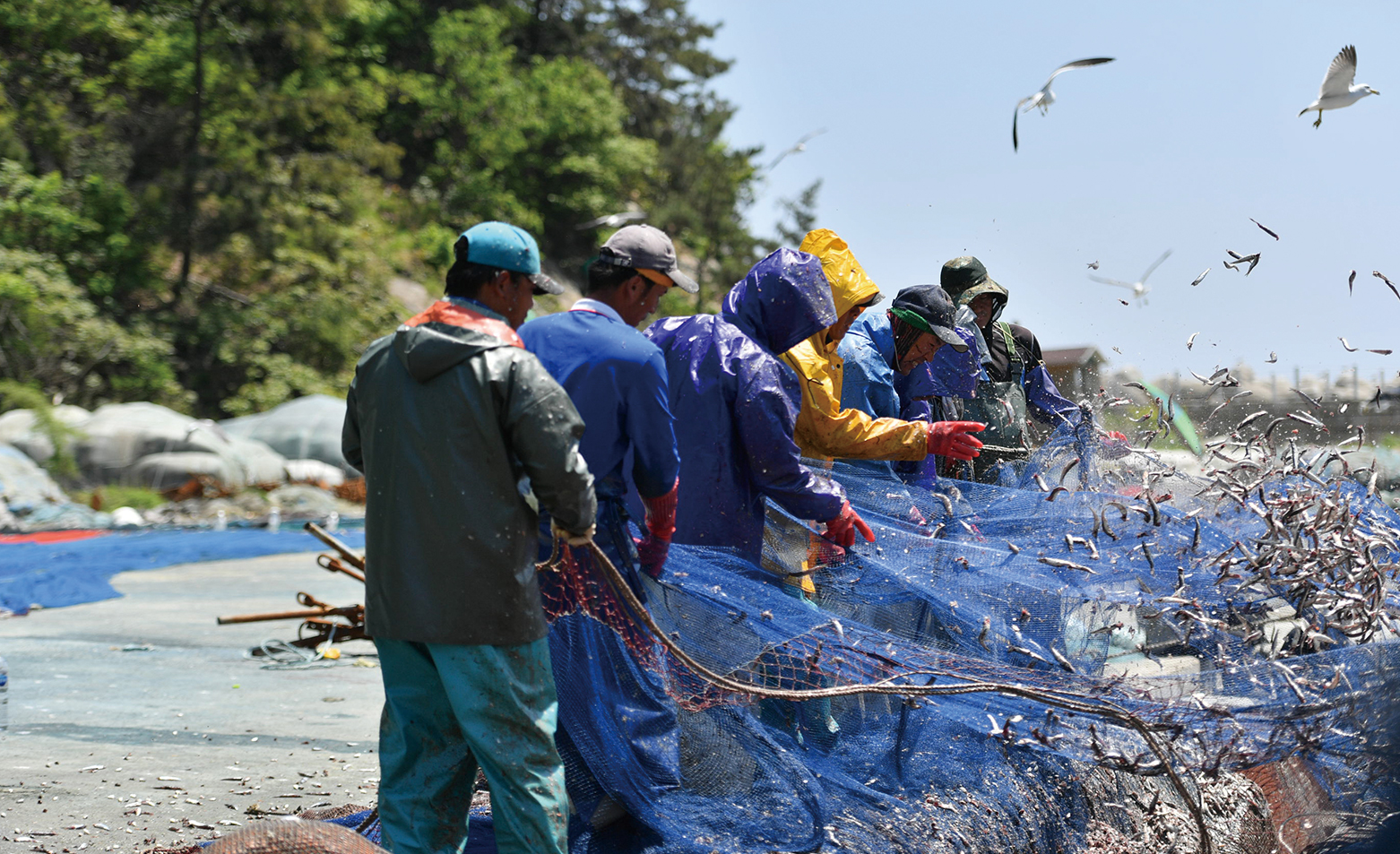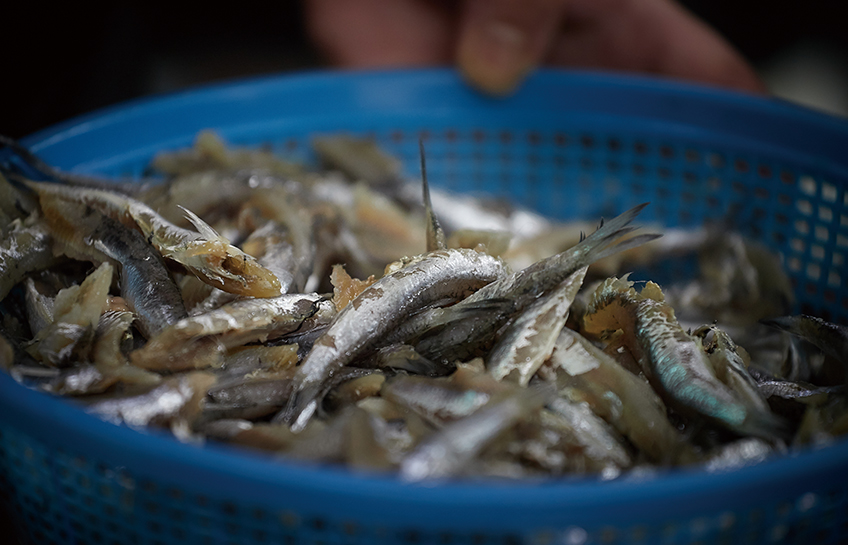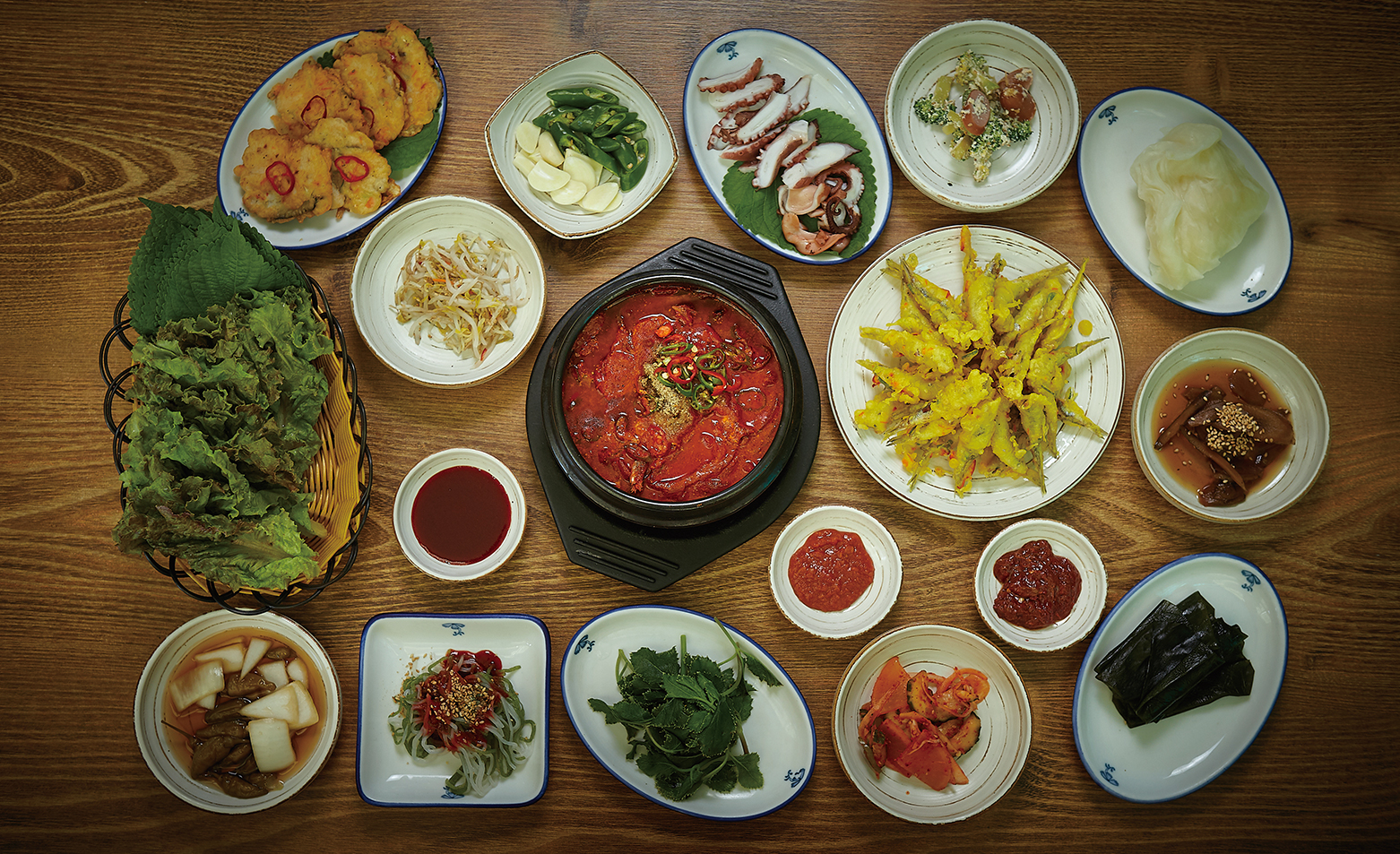
Contents










Local Taste · Written by Seo Donghyun Photographed by Studio Kenn
Anchovy Asset
Myeolchi Ssambap
Located on the southern tip of the Korean Peninsula and overflowing with things to see and eat,
Gyeongsangnam-do Province is famous for its anchovy that attracts numerous visitors lured by the
fantastic flavor of the flapping fish just pulled from the sea.

The word that best expresses Gyeongsangnam-do Province is probably “beauty.” From the magnificent scenery of the mountains and seas to their convergence with the landscapes of winding rice paddies resembling the contour lines and features of a living person, all that can be found here is beautiful. This is why the province attracts so many visitors, and among the numerous things to see and do, the food stands out the most.
The province is rich in cultural heritage preserved for almost as long as its unspoiled natural landscape, including farming and fishing methods handed down for centuries. Bangjoeoburim in Mulgeon-ri Village is a forest built to enable farming by blocking gusts of sea wind. The woods comprise 40 kinds of 300-yearold trees including deciduous varieties like hackberry, oak and zelkova, along with fringe and evergreen trees like the silver magnolia. These trees protect villagers from typhoons and chloride attacks. An old method of survival here was for residents to base their livelihoods on rice paddies in Gacheon Daraengi Village, where terraced paddy fields exceeding 108 stories were formed by building a stone wall on the rolling hills of the mountains of Seolheulsan and Eungbongsan toward the sea. The winding rice paddies seem reminiscent of contoured lines and charm everyone who sees them. Also, the fishing techniques of the seaside villages date back to the Joseon Dynasty.
Silver Fish Treasures
Why is the province most famous for its anchovy? It’s the traditional jukbangryeom method of catching the fish through bamboo weirs. Namhae-gun County, in particular, -- a small town located along the southern edge of the province -- is known to have long retained the unique fishing method.
Fish traps are installed on the oak stakes nailed densely in the wetlands where the tide’s ebb and flow is strong. The entrance of the traps is open when the tide is in and closed at low tide. This allows no escape for the anchovies once they are trapped. Anchovies caught through this inherited fishing method never fail to have a more hardy and chewy texture than those in other regions.
They are usually eaten bone-in, which means they contain the most calcium among all fish and shellfish consumed and are also rich in minerals like phosphorous and iron with plenty of nucleic acid and essential amino acids that help stimulate protein synthesis and growth. Chewable from head to tail, the creatures are small but a robust ingredient because nothing is thrown away and their nutrients can be ingested.

Anchovies captured in the sea near Gyeongnam are well known for their excellent quality and are distributed throughout the country. © Geoje City
Unrivaled Flavor
Ways to eat anchovy are diverse. Cleaning freshly caught anchovy on the spot and mixing it with traditional vinegar that ferments makgeolli (milky rice wine) before eating quickly stimulates the appetite. Sweet and sour raw anchovy are seasoned with vegetables like water parsley and onions and then marinated with red pepper paste after their intestines are removed, and this makes the mouth water once tasted. The anchovy can also be eaten in a stew when ripe kimchi and anchovy are added to soybean paste. Residents also enjoy anchovy stew and makgeolli as snacks and present-day raw anchovy dishes are said to have been invented thanks to the practice of dipping raw anchovy in makgeolli.

You remove only the guts from healthy anchovies and cook them without taking out their bones.

You add plentiful anchovies into a spiced broth and boil it thoroughly.
Anchovy wrapped in green vegetables originated from anchovy stew. The dish involves eating vegetable-wrapped boiled anchovy together with soybean paste. Seeing anchovy eaten as sashimi or boiled food in the city is rare but those caught in the coastal waters of the province are second to none as ingredients because they are bigger and chubbier. Anchovy is taken, wrapped in vegetables and boiled with red pepper powder, garlic and dried radish greens. Adding a generous helping of spicy garlic makes one feel as if he or she is back in Gyeongsangnam-do Province as the deliciously spicy seasoning is added to the tasty and soft anchovy.

As many restaurants are located near the sea, fresh seafood is commonly served as side dishes.
Other Articles















